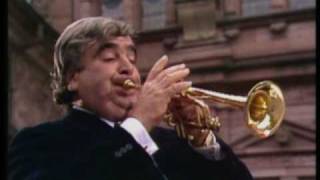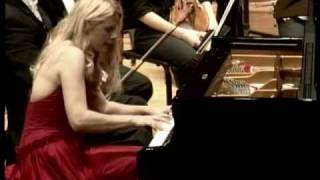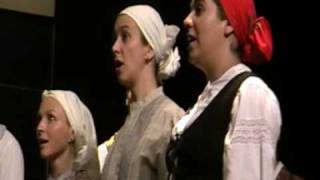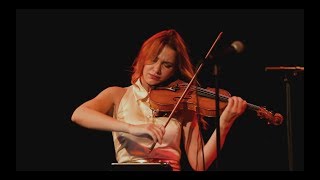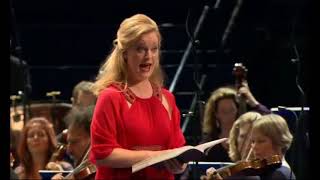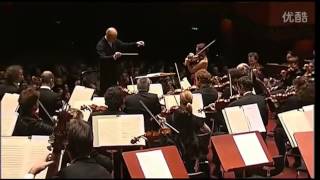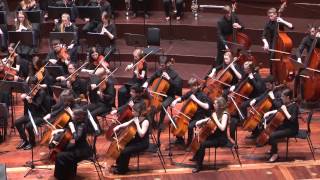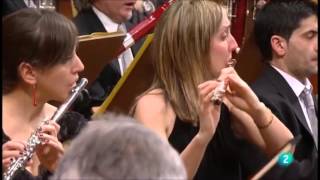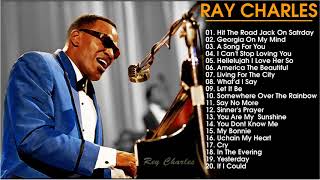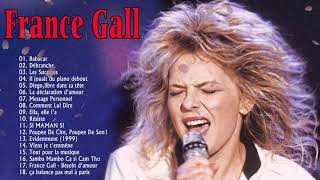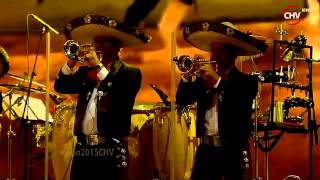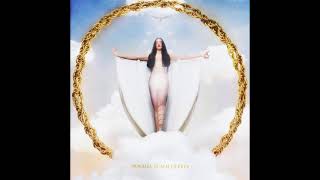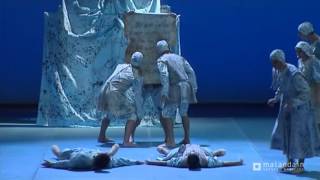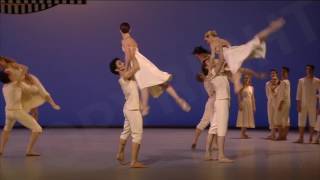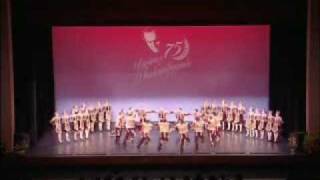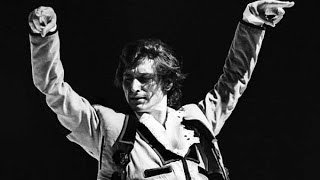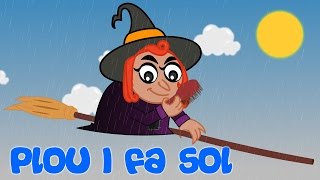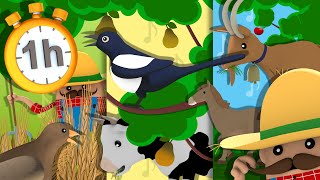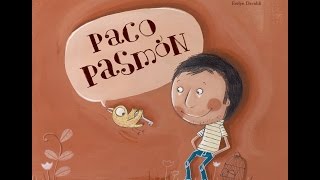Recommended music videos for initiation to classical music
Franz Joseph Haydn (1732-1809), Austrian composer whose brother Michael Haydn was also a notable composer, was one of the main pillars on which classicism (1750-1810) was based. At the age of six he began his studies on the harpsichord and violin. At the age of eight he was admitted as a chorister at St. Stephen's Cathedral in Vienna where he continued his musical studies. After changing his voice, he had to survive by working multiple jobs, while studying composition by analyzing the works of Carl Philipp Emanuel Bach . He maintained a close friendship with Mozart and was a teacher of Beethoven . He established the main bases of the sonata form and the formal structure of the string quartet and the symphony. He died at the age of 77 in Vienna .
The Concerto for Trumpet and Orchestra in E flat major is the only concerto written by Haydn for this instrument. It was composed in 1796, at the request of Anton Weidinger , who spent about 4 years testing his new instrument with minor works and fine-tuning his own technique. He premiered it on March 22, 1800 in Vienna . It is the first concert for a five-key trumpet, an instrument created to overcome the limitations of traditional bronze instruments; an instrument that would be surpassed by the current three-valve trumpet created in 1813. The concerto is articulated in three movements, of which we offer the first today.
Maurice André (Alès, France, May 21, 1933 - Urrugne, Basque Country in France, February 25, 2012) was a French trumpeter, who was born into a mining family. Although at the age of fourteen Maurice also began working in the mine, in 1951 he began to study at the Paris Conservatoire and already in the first year he won the Premier Prix of the Conservatoire in cornet, and the following year, in the specialty of trumpet. . In 1955 he won first prize at the Concours Internationale de Genève . In 1962 he was appointed professor of trumpet at the Paris Conservatory and a year later he won first prize in the prestigious Munich Competition , which prompted him to an international career with the best ensembles in Europe , the USSR, the USA and Japan , with which he begins to be recognized as the most important trumpeter in the world.
Ludwig van Beethoven (1770-1827) together with Bach and Mozart is part of the trio of giants of Western music. Born in Bonn , his father, of Flemish origin, tried to make a second Mozart of him, though it was a notable failure. Despite this, from the age of nine, the organist Christian Gottlob Neefe captivated him with the study of Bach , whom he would always keep in mind. In 1787 he moved to Vienna with the intention of receiving Mozart classes, but the death of his mother brought him back to Bonn after a few days. And so after five years, he returned to Vienna where he made contact with Haydn and Salieri , making himself known as a composer and pianist with well-known public recognition. However, his profession as a pianist could not be carried out due to the deafness that attacked him the following year until he was totally disabled from said faculty.
For Elisa. The work we offer today is a trifle written for solo piano and one of Beethoven 's most popular works. The score was released 40 years after his death after his manuscript was found among the papers of a former student. It seems that there was a confusion due to the reading difficulties that the title had and that instead of “ Fur Elise ”, what was written was “ Fur Therese ”; therefore, the work should be titled Para Teresa .
Today it is performed by Valentina Lisitsa (1973), a Ukrainian pianist who has lived in the USA since 1991. She began studying piano at the age of three, later enrolling in the Kiev Conservatory where she met her husband Alexei Kuznetsoff , also a pianist. Lisitsa has sought out her audience through her own You Tube channel for which she has recorded many performances, currently being the most watched classical soloist on the internet.
José Antonio Donostia or Aita Donostia , in Spanish Father Donostia (1886-1956) was a writer, composer, musicologist and organist from San Sebastian, who began his musical studies in 1896 when he entered the Lekaroz Seminary (Nafarroa) as a student at the age of ten. . In 1908, after becoming a priest, he expanded his musical training in Barcelona and in the years 1920 and 21 he perfected it in Paris with Eugenio Cools . In 1932 he became a euskaltzain , that is, a member of the Royal Academy of the Basque Language (Euskaltzaindia). As a composer he produced abundant chamber music, organ pieces, numerous choral works, melodies and piano songs, which brought him well-deserved renown. As a folklorist, he collected more than a thousand Basque popular songs.
Kup Taldea . Spontaneously conceived by a group of young musicians with a great love for music, a desire to be able to enjoy it and, in turn, the desire to achieve a group of remarkable quality, Kup Taldea began its journey in the spring of 2003. This dream came true thanks to maestro Gabriel Baltès , professor of choral conducting at the Higher Music Center of the Basque Country, Musikene . The members of the group are musicians who, despite their youth, have extensive experience in the choral world and great musical training at all levels. The group has participated in numerous national and international choral meetings performing works of great importance, both in their technical complexity and in their musical significance. (Extracted from Auñamendi Eusko Entziklopedia)
Today, conducted by its owner Gabriel Baltés , they offer us the Basque popular song Iru Txito harmonized for mixed choir by Aita Donostia .
Hans Zimmer (1957) is a German composer of soundtracks and video games. In 1988 the composition of the soundtrack of the movie Rain Man is worthy of his first Oscar nomination; from which he integrates into Hollywood doing various jobs and begins to be known and recognized in specialist and popular environments. In 1994 he got his Oscar with the soundtrack of The Lion King . He has been awarded with the Golden Globes, BAFTA, Emmy, Saturn and Grammy , to the point that he is known in his world as "the omnipresent Zimmer ", because his compositions appear on the most diverse occasions. He is currently considered one of the most relevant composers of soundtracks.
The video that we offer today, Chevaliers de Sangreal, is the final theme of the soundtrack of the movie The Da Vinci Code .
Recommended classical music videos
Georg Friedrich Handel ( 1685-1759) born in Halle , Germany, is one of the leading figures in the History of Music and, of course, of the Baroque (1600-1750). He wrote numerous operas, cantatas and oratorios, among which we must highlight his masterpiece, the Oratorio El Mesías . At the age of 18 he moved to Hamburg where he joined the Opera Orchestra . After three years, he traveled to Florence and then to Rome . In 1710 he returned to Germany and from there to London where he settled under the tutelage of different patrons. Although he was always very jealous of his private life, there are innumerable indications that make us assume his homosexual inclination. In London he acquired his British nationality and was appointed manager of the Opera House until his death in 1759.
Samson (HWV 57) is an oratorio by Georg Friedrich Händel , based on a libretto by Newburgh Hamilton , based on Samson Agonistes , by John Milton , based in turn on Samson , a character from chapter 16 of the Book of Judges . The premiere was given to great acclaim at London's Covent Garden on 18 February 1743, and a total of seven performances were given in its first season, the most in a single season of any of his oratorios. Samson retained his popularity during Handel 's lifetime and has never been forgotten since. The well-known arias Let the bright Seraphim (for soprano) and Total eclipse (for tenor) are often performed separately in concert.
The Oratorio, structured in three parts (I: 0´12´´ .-. II: 59´42´´ .-. III: 2h 3´06´´) is considered one of Handel 's best dramatic works. Today we offer it in a version by Susan Gritton and Lucy Crowe , sopranos; Iestyn Davies , countertenor; Mark Padmore , and Ben Johnson , tenors; Neal Davies and Christopher Purves , bass and The English Concert & The New Company all conducted by the English maestro Harry Bicket .
Felix Mendelssohn (1809-1847) was a German pianist, conductor and composer of outstanding technical and formal perfection. Child prodigy who at a very early age showed his extraordinary abilities and brother of the pianist and composer Fanny Mendelssohn , also a child prodigy. He began by receiving piano lessons from his mother; At the age of eighteen, he entered composition classes based on Bach 's Well-Tempered Clavier . In this way, Mendelssohn 's works show a well-established tonal clarity and a deep mastery of counterpoint. His legacy includes piano music, organ music, chamber music, overtures, symphonies, concertos, oratorios, and incidental music.
The Violin Concerto in E minor, Op. 64. In 1838 Mendelssohn promised violinist friend Ferdinand David a violin concerto , which took six years to complete, while Mendelssohn corresponded regularly with David , seeking advice. Despite the fact that the concerto consists of three movements (I ALLEGRO MOLTO APPASSIONATO .-. II (13´24´´) ANDANTE .-. III (21´15´´) ALLEGRETTO NON TROPPO – ALLEGRO MOLTO VIVACE) in the structure and traditional form, the work was innovative for the time. As distinctive aspects, the immediate entry of the violin at the beginning and the link between movements without a solution of continuity stand out. The work was soon considered one of the greatest violin concertos of all time.
Hilary Hahn (1979) is an American violinist, winner of three Grammy Awards. A child prodigy, at age 3 she moved to Baltimore , Maryland, where she began studying violin a month before her 4th birthday, at the Peabody Conservatory . In 1991 he made his debut with the Baltimore Symphony Orchestra . His international debut was in 1995, when he performed, together with the Bavarian Radio Symphony Orchestra and under the direction of Lorin Maazel , Beethoven 's Concerto for Violin and Orchestra . He has toured the world performing with the London Symphony, the New York Philharmonic, and the Singapore Symphony , among others. Today he does it under the baton of the Estonian maestro Paavo Järvi .
Piotr Tchaikovsky (1840-1893) was a Russian composer who graduated from the Saint Petersburg Conservatory and wrote works of different genres, although he achieved his greatest success with his ballets. In 1859 he obtained a position as a civil servant in the Ministry of Justice , which he would abandon at the age of three to be able to dedicate himself solely to music. His personal life was plagued by continuous crises since the death of his mother and his repressed homosexuality, which forced him into a marriage that only lasted a few months. He wrote more than 150 compositions, including piano works, quartets, suites, symphonies, concertos, chorales, cantatas, operas, and ballets. He died at the age of 53 and is considered one of the greatest composers in history.
Romeo and Juliet , the work that we offer today, is an "overture/fantasy", as the author himself subtitles it, based on a work of the same name by William Shakespeare ; In it, he portrays the moods of the characters who have to live between love and violence faced over and over again until the theme of love appears languid and deadly announcing the suicide of the two protagonists.
Today we can see it in the interpretation of Sian Edwards (1959), an English director who began her career focused mainly on opera and was the first woman hired by the Royal Opera House , Covent Garden to be invited again the following year. He has worked with many of the most important orchestras in the world such as the Los Angeles Philharmonic , the Berlin Symphony , the Radio Frankfurt Symphony , the Saint Petersburg Philharmonic , the London Sinfonietta , etc, etc.
René Françaix (1912 - 1997) was a French pianist and composer born into a family of musicians. At the age of 18, he won his first prize for piano at the Paris Conservatoire , studying composition with Nadia Boulanger . His youthful composition, the Concertino for piano (1932) was an immediate success. His repertoire as a composer consists of some two hundred musical works. In addition to various pieces for solo instruments, he composed two saxophone quartets, several concertos, an oratorio, a mezzo-soprano cantata, five operas... and music for a dozen films. His work combines elegance with wit. Currently, the composer enjoys more success abroad than in France , especially in countries such as Germany, Japan and the United States .
Ander Tellería studied accordion at the Conservatory of Music of the Basque Country (Musikene) under the guidance of Iñaki Alberdi , and at the Hochschule für Musik Würzburg (Germany), where he completed a Master's Degree in Musical Performance with Stefan Hussong . Considered by international critics as "an accordion prodigy", and by Diario ABC as one of the three young performers with the greatest international projection, he is one of the most active accordionists in our country. He has given recitals in countries such as Argentina, Germany, France, Japan, Croatia, the Netherlands or Austria and has given concerts with orchestras such as the Norddeutsches Philarmonisches Orchester, Ensemble Ciklus, the Spanish Radio Television Symphony Orchestra, the Bilbao Symphony Orchestra or the National Orchestra . (Extracted from an article by CSMA: Conservatorio Superior de Aragón)
Recommended music videos for all tastes
Ray Charles (1930-2004) was an American soul and R&B singer, saxophonist, and pianist, who began losing his vision at the age of 5 and was blind by 7. He was a pioneer of soul music during the 1950s by combining blues, rhythm and blues, and the gospel style into the music he recorded for the Atlantic label. He contributed to the integration of country music, rhythm and blues , and pop music during the 1960s with his great success on ABC Records , notable with his two Modern Sound albums. While with ABC , he was one of the first African-American musicians to have artistic control over the company for which he recorded.
Greatest Hits : 1 (0:00) Hit the Road Jack .-. 2 (3:30) Georgia On My Mind .-. 3 (8:22) A Song for You .-. 4 (13:57) I Can't Stop Loving You .-. 5 (18:18) Hallelujah I Love Her So .-. 6 (21:23) America the Beautiful .-. 7 (25:24) Living in the City .-. 8 (30:07) What'd I Say .-. 9 (34:15) Let It Be .-. 10 (37:12) Somewhere Over the Rainbow .-. 11 (41:15) Say No More .-. 12 (47:07 Sinner's Prayer) .-. 13 (49:30) You Are My Sunshine .-. 14 (52:43) You Don't Know Me .-. 15 (56:12) My Bonnie .-. 16 (1:00:04) Unchain My Heart .-. 17 (1:02:44) Cry.-. 18 (1:06:14) In The Evening .-. 19 (1:13:16) Yesterday .-. 20 (1:16:46) If I Could .-. 21 (1:21:02) Tien Dua - Thanh Vu (Don't ask me why this song is here.. It..just is)
France Gall (1947-2018) grew up in her mother's choir beginning to record as a soloist with Phillips at age 15; France became very popular with songs by Gainsbourg , Joe Dassin and other French composers, including his father. In 1964, Gall was selected to represent Luxembourg in the Eurovision Song Contest after previously trying to represent her own country. Of the ten songs that were proposed to him, he chose Gainsbourg 's Poupée de cire, poupée de son . On March 20, 1965, France Gall performed the theme in Naples , becoming the winner. The Eurovision triumph allowed France to become known in other countries, recording the award-winning song in German, Italian and Japanese; sold over 3.5 million singles.
Alejandro Fernández Abarca ( Guadalajara , Mexico, April 24, 1971) is a Mexican mariachi and Latin pop singer, son of the remembered and late ranchero singer Vicente Fernández . At first he specialized in traditional regional Mexican music styles such as mariachi . Later it has diversified towards Latin pop with urban touches, the ballad and the bolero . He has a solid recording career and has been the recipient of three Latin Grammys and six Billboard Awards . He has managed to sell around the world approximately 40 million albums.
Viña del Mar 2015: 1 (2:42) Concave and convex.-. 2 (6:49) My voice is gone .-. 3 (11:49) What am I going to do with my love.-. 4 (16:42) Vent .-. 5 Today I want you (19:43) .-. 6 (24:34) It does me so much good .-. 7 (28:37) I will love you .-. 8 (32:53) I'm going to lose you .-. 9 (36:45) Sing heart .-. 10 (43:48) I dedicated myself to losing you.-. 11 (48:37) If you only knew .-. (52:55) Mariachis .-. 12 - Where you go so alone (59:30) .-. 13 - Kill them (1:03:10) .-. 14 (1:06:12) What a pity .-. 15 (1:10:21) Light helmets.-. 16 (1:12:35) Such a pity .-. (1:17:01) Silver seagulls .-. 17 (1:18:07) It's the woman .-. 18 (1:22:07) Like who loses a star .-. (1:27:58) Golden seagulls .-. 19 (1:29:25) The day you love me .-. 20 (1:33:07) Divine women.-. 21(1:35:14) I'm going to get out of the way .-. 22 (1:36:38) A good love is worth more .-. 23 (1:38:15) Beautiful honey .-. 24 (1:39:50) This jealousy .-. 25 (1:41:39) Here between us.-. 26 (1:43:44) How do I forget you
Rosalía (Barcelona, 1992) is a Spanish singer, songwriter, producer and actress. She has been awarded two Latin Grammy Awards for " Malamente " and five for the album that we present today, El mal querer , which made her the Spanish artist with more awards given by the Latin Academy of Recording Arts and Sciences for a single work, and two MTV Video Music Awards . On January 26, 2020, he received the Grammy Award for Best Urban or Alternative Latin Rock Album in the city of Los Angeles , also being the first person in history to be nominated for a Grammy for Best New Artist with a Spanish debut album. Rosalía mixes traditional flamenco with the copla and with modern styles such as pop, trap, hip hop, electronic music.
Recommended peculiar videos
Jules Massenet (1842 - 1912) was a French Romantic composer best known for his operas, which were very popular during the late 19th and early 20th centuries. Born in Montaud , when he was eleven years old his family moved to Paris so that he could study at the Conservatoire where he would be a student of Ambroise Thomas . He obtained a first prize for piano in 1859 and in 1863 he won the Grand Prix of Rome thanks to his cantata David Rizzio ; in 1878 he was appointed professor of composition at the Paris Conservatoire . Massenet has left an essentially lyrical work (twenty-five operas); but he also composed ballets, oratorios and cantatas, orchestral works and some two hundred songs, as well as some piano works.
Le Carillon . The action takes place in Courtrai , Flanders, in the 15th century . Karl the watchmaker and Berta love each other generously against the intentions of Pit the baker and Jef the chimney sweep. A herald announces the imminent arrival of the Duke of Burgundy and adds that if he is not received with the sounds of the new carillon from the church of San Martín , the watchmaker will be imprisoned. Kart is desperate because he still has a long way to go to finish his work. Alone at night, Karl thinks he sees angels ringing the bell, while Pit and Jef go up the bell tower to destroy it. The new day dawns and at the moment the Duke enters the carillon begins to play. Those present look up to see Pit and Jef transformed into bell tower dolls, hitting the bell with their hammers. Berta and Karl fall into each other's arms. (Extracted from the Malandain Ballet website).
Thierry Malandain . With more than eighty works to his credit, he develops an absolutely personal idea of dance. Closely linked to the concept of "Ballet" as an aesthetic current, his idea gives priority to the dancing body, to the celebration of its sensuality and its humanity. Led by a group of performers who perfectly master the grammar of classical dance but whose expression is current, Thierry Malandain 's career is based on profound human values. Through his creations, which can be as serious as impertinent, he wishes to develop a writing that achieves harmony between the classical and the contemporary, history and the current world. ( Extracted from the Malandain Ballet website ).
Joby Talbot (1971) is a British composer, who has written for a wide variety of purposes, and consequently in a wide range of styles, including instrumental and vocal concert music, film and television scores, pop arrangements, and works of dance. Although classically trained, Talbot 's early career focused on film and television soundtracks and pop arranging. He worked as an arranger and keyboardist for the band The Divine Comedy from 1993 to 2002. In 1999, after some minor jobs, he began to receive all kinds of important commissions from relevant institutions such as The Royal Ballet, The Proms, the BBC National Orchestra of Wales , the Royal Liverpool Philharmonic or the Turku Philharmonic .
Alice's Adventures in Wonderland is a three-act ballet by Christopher Wheeldon based on the Lewis Carroll short story of the same name. It was commissioned by The Royal Ballet, Covent Garden , and the National Ballet of Canada ; its world premiere was on Monday 28 February 2011. Joby Talbot 's music is the first full-length score for The Royal Ballet in 20 years; it is also the first full-length narrative ballet commissioned by the company since 1995. Joby Talbot 's score blends contemporary sound worlds with sweeping melodies evoking 19th-century ballet scores. Today we offer the Pas de deux in interpretation of the soloists of the Royal Ballet , Sarah Lamb and Federico Bonelli .
The Armenian Dance appears in cave paintings from 5,000 years BC; scenes of country dances are supposed to be accompanied by musical instruments or songs. Already in the fifth century, Moses of Khoren recounts how the ancient Armenians used the lyre and its songs for dancing. Currently, each region continues to have its own dances with their exclusive costumes; dances that tell us the stories, customs and traditions of their people, from ceremonial dances to war dances.
Vanoush Khanamirian (1927-2011) was a famous Armenian dancer and choreographer who founded the school that bears his name and which we have before us today with one of its traditional dances.
Antonio Gades (1936-2004) was a Spanish dancer and choreographer born in Elda, Alicante, into a humble family a few months after the start of the Spanish Civil War . At the beginning of 1937, his father, a bricklayer by profession, volunteered for the Republican Army , moving to the Madrid front; a little later the whole family will follow. In 1947 Antonio Gades must start working and he will do so in a well-known photographic studio, the one in Campúa "where the photographs of artists of the time filled the entire wall of the dark room" and in the ABC newspaper as a waiter.
In 1949 , he enrolled in a dance academy, where chance would allow him to meet Pilar López Júlvez months later, who would be his discoverer and admire his natural gifts and exquisite purity. In 1951 he joined the company. In 1962 he founded his first company and in 1978 he founded the Spanish National Ballet , of which he was director. During the Spanish Transition he declared himself a " Catalan from Elda " with a Marxist and pan-Catalanist ideology of independence; Later he ended up militating in the Communist Party of the Peoples of Spain (PCPE), being a member of its Central Committee until his death, remaining linked to the Communist Party of Cuba all his life.
Recommended music videos for children
Various Wikipedia articles have been used to write these texts.
The texts of Videomusicalis are written in Basque, Spanish and English.





